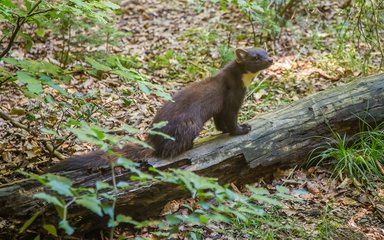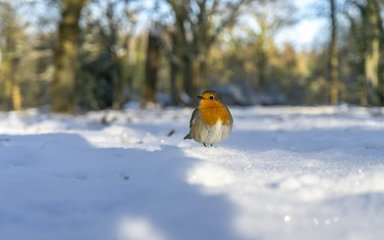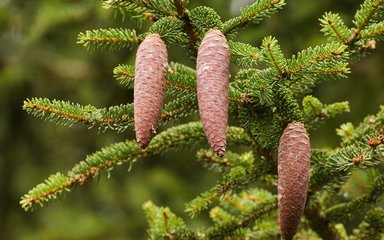
Explore the wonderful, wet world of bog habitats within the nation's forests and find out why they play a vital role for climate and biodiversity.
What is a bog?
'Bog' is just one of the many names for a peatland. Peatlands are unique ecosystems formed on peat, a type of soil that is created in waterlogged conditions where dead plants, such as moss, can’t rot down. Mosses that grow on peatlands act as sponges, holding in water and maintaining the wet conditions.
Why are peatlands special?
Peatlands are home to many rare plants, insects and birds. Peatlands are also huge carbon stores, covering just 3% of the world’s surface yet holding nearly 30% of the soil carbon. UK’s peatlands are globally important and the mosses that grow there are vital in our fight against climate change. Despite their importance, peatlands around the world are disappearing.
Do we need to restore our peatlands?
In the UK, at least 80% of peatland habitats have been lost or damaged. Healthy peat bogs act as 'carbon sinks' storing huge amounts of carbon. However, damaged bogs dry out and release carbon dioxide into the atmosphere, accelerating climate change. Recovering this habitat is important for climate and nature. Many species rely on peatlands to survive and are lost along with the habitat. Peat bog restoration helps rare plants and animals specifically adapted to live in boggy conditions to thrive.
Did you know...? Carnivorous plants live in our bogs! Sundews devour insects attracted by their tentacles and sticky, sugary secretions.
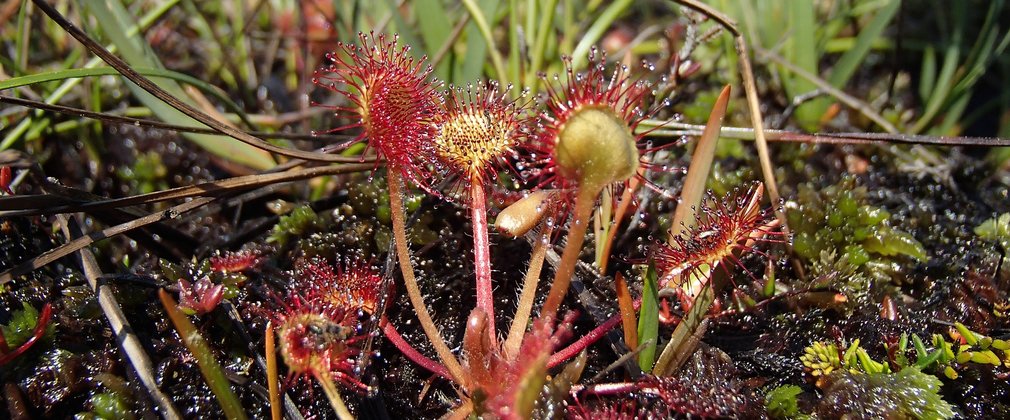
What is Forestry England doing?
We have been working hard to protect and restore peatland and other wetland areas across England. Increasing woodland cover across the nation is important for locking up carbon, but the wrong trees in the wrong places can have adverse impacts on the environment. The nation’s forests are carefully planned, using principles of sustainable forest management set out by the UK Forestry Standard (UKFS).
In the past, many trees were planted on peat bogs across Britain because it seemed a good use of the land at the time. These areas couldn’t support agricultural crops but could supply vital timber. We now know peatlands are hugely important for our climate and for rare wildlife.
We make sure planting trees does not lead to the loss of other important habitats. Removing trees from peatlands can help to restore the mosses that ensure peatlands, their function and wildlife can thrive. That's why sometimes we chose not to replant after harvesting timber and create open habitat instead, where this will benefit the environment.
Delamere Forest, Kielder Forest and the New Forest are three of the many areas where we're been restoring bog habitats. Read on to find out about each project.
Delamere Forest: Meres and mosses
The bogs at Delamere Forest date back to the last ice age, but in the 1800s the majority of the site was drained to plant trees. The value of the habitat was recognised by local Forestry England staff during the 1990s, when we started the pioneering restoration project with Cheshire Wildlife Trust and Natural England. Through careful habitat management, the lost mosses are continuing to be restored to this day using techniques and lessons learnt from the 90s.
Delamere Forest has at least 100 bogs, nearly half of which have now been recently restored or restoration is underway. This has also been great news for wildlife. Working with Cheshire Wildlife Trust, we successfully reintroduced the locally extinct white-faced darter dragonfly to the forest. It was only the third time that any dragonflies have been the focus of a reintroduction scheme anywhere in Britain.
We have seen some fantastic results, working with partners and volunteers along the way. We are thrilled with the return of sphagnum mosses and the notable increases in a wide range of species.
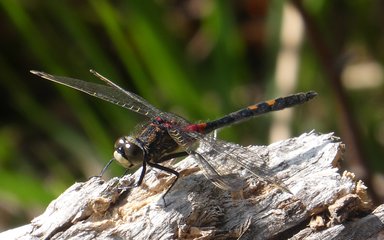
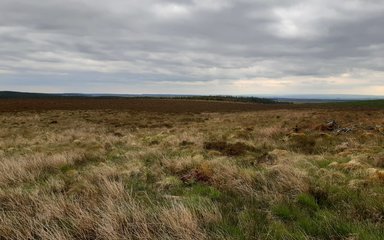
Kielder Forest: Border Mires
Border Mires are a collection of 55 peat bogs with exceptionally deep peat covering over 2,000 hectares. They are the largest and most important collection of bogs in England. The Kielder Mires, an area of two bogs known as Grain Heads Moss and Coom Rigg Moss, are a National Nature Reserve and many others are designated as Sites of Special Scientific Interest.
For over 40 years, work has been underway to remove non-native trees from the mires and block up ditches and drains to raise the water level of the bog. Stemming the flow of water allows sphagnum moss to grow and eventually form peat. This has involved hours of hard work using chainsaws, hand tools and special machines capable of travelling across the delicate and very soft, wet ground.
The mires are nationally and internationally important ecosystems. Plant species found on the mires include cranberry, bog rosemary, bog asphodel, a number of sedges and (not to forget) the carnivorous and beautiful great sundew and round-leaved sundew! The large heath butterfly is also a specialist in these bogs, with hare’s-tail cotton grass supporting the larvae as a host plant and crossed-leaved heath a nectar source for the adult butterflies.
Work to restore the remaining bogs continues as part of the Border Mires Committee, with experts from Forestry England, Northumberland National Park, Northumberland Wildlife Trust, Royal Air Force (MOD), Natural England and Newcastle University.
New Forest: Bogs and wetlands
Bogs in the New Forest play a critical role. They hold much needed water on the land, supporting wildlife and plants and helping to prevent flooding for communities further downstream. In one of England’s largest environmental improvement projects, we have restored natural bends and meanders along 20 miles of streams in the New Forest, bringing them back to health. The award winning project is part of the New Forest Higher Level Stewardship (HLS) scheme, a partnership between the Verderers, Forestry England and the National Park Authority.
Over the last three years, we have returned Wootton stream to follow its original twisting path after being artificially straightened in the 1800s. Over 2,700 metres of its natural curves were restored, doubling its length and helping the land and wildlife around it to thrive.
The bogs, streams and wet areas in the New Forest are home to wildlife and plants that have long since disappeared from much of the rest of England. Rare plants are thriving here on the wet and boggy areas, like the lesser butterfly orchid and pillwort, a tiny creeping fern in decline across Europe. The New Forest is also one of the last places in the UK where you will find the southern damselfly.
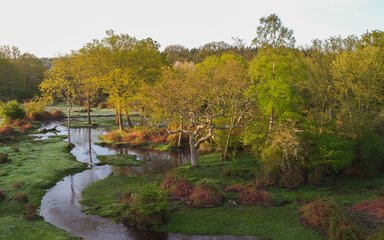
Find out more about UK peatlands
Celebrate the brilliance of bogs, discover the benefits they provide, the threats they face and the ways we can all help protect them.

